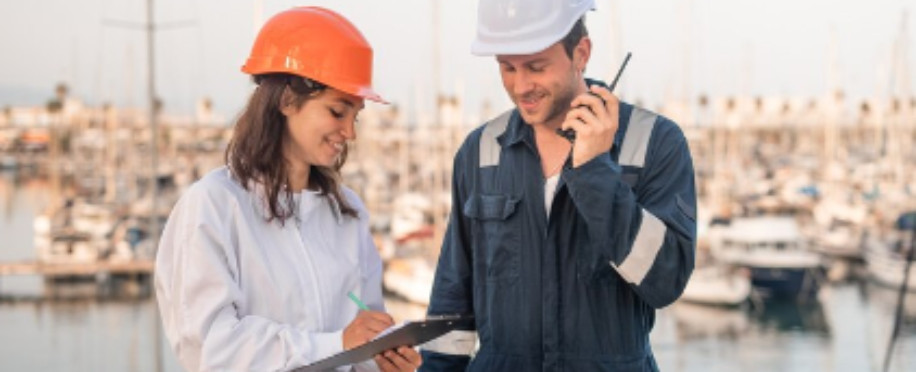Copyright © 2025 lmitac.com All Rights Reserved. Contact - Terms and Conditions - Privacy Policy - Quality Policy - Become an instructor - Vacancies - Sitemap
London Maritime Academy is a trade name for London Premier Groupversion: 2.9.0
London Maritime Academy is a trade name for London Premier Group

Posted on : 4/9/2024, 5:55:17 PM
Although the maritime industry is one of the most dangerous industries in the world, yet it is the most efficient transportation way on the international level. And following the maritime safety standards can help international ships do their voyages efficiently and safely.
The maritime safety standards are the regulations and rules implemented by international organisations to organise maritime operations.
Continue reading with us to know more about the concept of maritime safety standards, working levels, and impacts on seafaring.
Maritime safety standards term is used to refer to all the regulations, guidelines, and best practices established by the International Maritime Organisation (IMO) and other maritime organisations. To promote the safety and security of maritime operations, crew members, passengers, the marine environment, and different types of ships including boats, vessels, and tanks.
Moreover, the maritime safety standards focus on setting all the maritime activities based on international conventions and developed national regulations to prevent accidents, lower risk possibilities, and boost ship safety.
Because maritime safety standards play a critical role in promoting sustainability and resilience on the global level, many revolutionary steps and investments are taking place to boost the efficiency of these standards. Including the e-navigation, machinery development, maritime equipment automation, and IoT.
All the work done on the maritime safety standards aims to achieve better safety on the sea, however, that does not only include the health of working ships rather than everything attached to the marine and maritime.
Therefore, we can say that the maritime safety standards and policies work on many levels to guarantee the best outcome:
Human Safety.
Environmental Safety.
Infrastructure Safety.

According to the professional maritime safety training courses in London, we can divide the standards of the maritime safety regulations and requirements into the next listed essential standards.
However, please note that all these standards are international standards that are established and updated according to international maritime rules and regulations.
SOLAS are the safety standards that establish the basics of construction, equipment, and operation of ships to ensure the safety of life at sea, including aspects such as fire protection, lifesaving appliances, and vessel design.
MARPOL standard controls the release of chemicals and pollutants from ships into the marine environment, aiming to prevent environmental pollution from oil, chemicals, sewage, and garbage through strict regulations and controls.
COLREG sets out the main rules and regulations required to prevent collisions between vessels at sea, by creating the basic navigation rights and responsibilities and boosting safe navigation practices in the maritime industry.
LOADLINE organises the industry operations of load lines from/to ships to ensure safe loading conditions and prevent overloading, leading to protecting the vessels from structural damage and unstable shipping.
The implementation of ISPS measures and procedures aims to enhance the security level of ship equipment, transport planning, port construction, and facility design to avoid security threats such as terrorism and piracy.
The ISM requires shipping companies to establish and maintain an effective safety management system and regulations to ensure the safe operation of vessels and prevent accidents, injuries, and environmental incidents in seas.
The STCW highlights the minimum standards and systems for the occupational and administration training, diploma program, certificate, and watchkeeping of seafarers and working crews.
To ensure they are equipped with the essential skills and relevant knowledge to follow and implement maritime safety standards, laws, and regulations in daily operations and challenges at sea.
The importance of maritime safety standards and regulations comes from their positive impacts on the marine environment and life. As they help provide the designed safety conditions and technical requirements for all working commercial and tourism ships in the marine industry.
The following of maritime safety standards and codes provide improved working conditions for the working crew on the ship, moreover, also ensure the safety of every single worker in port during cargo loading and other operations.
On the other hand, this regulatory framework is vital for the safety of nautical passengers as well, and ensuring they arrive safely to the other shore.
Based on international reports, maritime transportation is the biggest sector of the global transportation industry. And working based on maritime safety standards and plans will guarantee the effectiveness and safety of the working ships and transported cargo.
The maritime safety standards and treaties focus on protecting the marine environment and water from the impacts of the marine industry by setting rules and rescue regulations that organise these processes.
All the international efforts are empowering the maritime safety standards due to their amazing benefits on all the maritime work levels.
Thus, you need to train your team on the latest safety practices and ensure your equipment and tools are fully functioning all the time to boost the safety level in your business.